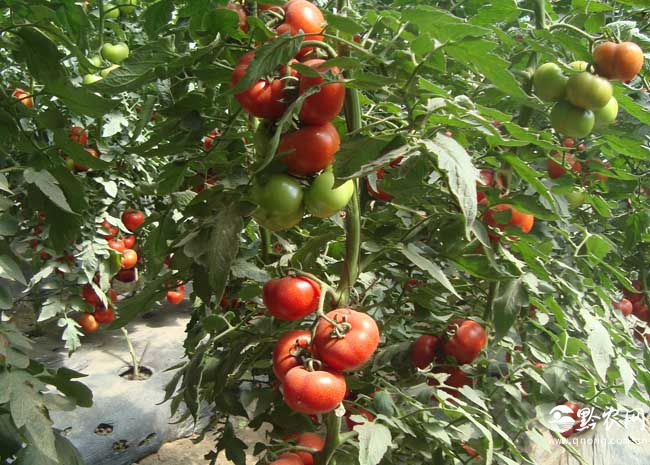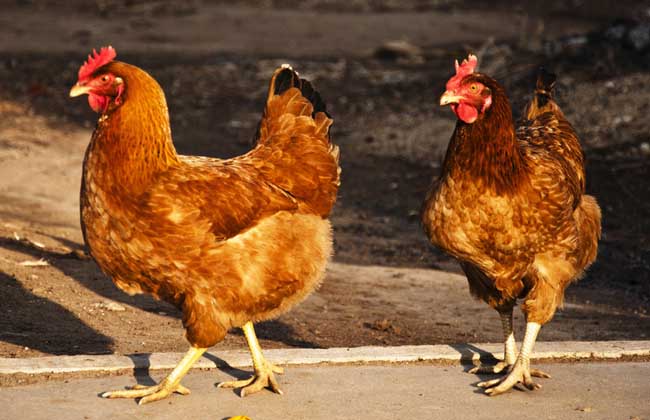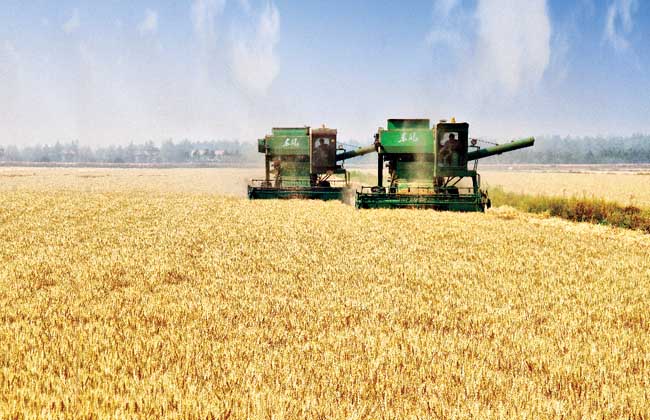What is green agriculture?

People are often heard talking about green agriculture, but do you know what green agriculture is? In fact, green agriculture is "big agriculture" in a broad sense, including green animal and plant agriculture, white agriculture, blue agriculture, black agriculture, fungus agriculture, facility agriculture, horticultural agriculture, sightseeing agriculture, environmental protection agriculture, information agriculture and so on. In the specific application, we generally refer to the "three products", that is, pollution-free agricultural products, green food and organic food, as green agriculture. After China's entry into WTO, the international market requires that China must take the road of green agriculture development for high-grade, high-quality, excellent varieties and non-toxic, harmless and pollution-free agricultural products.
How is green agriculture defined?
The so-called green agriculture refers to the agricultural production and operation mode with the production, processing and marketing of green food as the axis.
1. The proposal of green agriculture: in October 2003, Mr. Liu Lianfu, former director of the Agricultural Reclamation Department of the Ministry of Agriculture and former president of the Green Food Association, put forward the concept of "green agriculture" at the "International Symposium on Market Channel Construction of Green Food and Organic Agriculture in the Asia-Pacific region" hosted by the United Nations Economic and Social Council for Asia and the Pacific. At the same time, Vice Premier Hui Liangyu gave a reply and allocated 35 million yuan for the construction of a demonstration base.
2. The principle of green agriculture: green food shall be produced in a specific way in accordance with the principle of sustainable development, and pollution-free, safe, high-quality and nutritious food with green marks shall be allowed to be used as determined by special agencies. Actively developing green agriculture has become a strategic measure to meet international challenges.
3. The necessity of green agriculture: at the same time, the development of green agriculture is also the need to adhere to sustainable development and protect the environment. "Black agriculture" is often highly dependent on large-scale agricultural machinery, chemical fertilizers and pesticides, which not only consumes a lot of non-renewable energy, but also causes soil erosion, air and water pollution and other consequences. The development of green agriculture can fundamentally solve these problems. Green agriculture takes "green environment", "green technology" and "green products" as the main body, which promotes the transformation from chemical agriculture which is excessively dependent on chemical fertilizers and pesticides to ecological agriculture which mainly depends on the internal mechanism of biology.
What is the connotation of green agriculture?
Green agriculture is not the return of traditional agriculture, nor the negation of ecological agriculture, organic agriculture, natural agriculture and other types of agriculture, but a new type of agriculture which avoids all kinds of agricultural disadvantages, learns from each other's strong points to make up for its weaknesses and has rich connotation. Its connotation includes five aspects.
1. Green agriculture and its accompanying green food come from a good ecological environment. The earth provides human beings with a good climate, fresh air, rich water sources and fertile soil, so that human beings can reproduce from generation to generation. However, due to the rapid growth of population and economic development, resources have been destroyed and the environment has been polluted. the damage to natural resources has been fed back to human beings in the end. So out of instinct and scientific cognition, people begin to pay more and more attention to health, pay attention to food safety and protect the ecological environment. In particular, agricultural products without pollution and public hazards are especially favored. In this context, green agriculture and green food are recognized by the majority of consumers because of their inherent advantages and become the inevitable outcome with the characteristics of the times.
2. Green agriculture is a protected agriculture. Green agriculture is not only an environmental protection industry to improve the ecological environment and improve people's health, but also a weak industry that needs support and protection. Although there is no legislation on green agriculture, as a special product of green agriculture, green food is produced under the control of quality standards. Green food certification requires not only the environment of the place of origin and the use of inputs of the means of production, but also extremely strict quality standards for the internal quality of products and the implementation of production technical operating procedures, it can be said that from the land to the dining table, from production to post-natal processing, management, storage and transportation, packaging, sales of the whole process is achieved by monitoring. Therefore, green food is more scientific, authoritative and safe than other agricultural products.
3. Green agriculture is an organic combination with traditional agriculture. Traditional agriculture is self-sufficient. Its advantages are energy saving, resource saving, capital saving, intensive cultivation, combination of human and animal, application of organic fertilizer and no environmental pollution. However, there are also some disadvantages, such as low input, low output, low efficiency, single planting, low disaster resistance and low labor productivity. Green agriculture is an organic combination of traditional agriculture and modern agriculture, with the goal of high yield, stable yield and high efficiency, which not only increases the input of agricultural means of production such as labor, machinery and equipment, but also increases the soft input of science and technology, information, talents and so on. make green agriculture have more distinct characteristics of the times.
4. Green agriculture is a pluralistic comprehensive agriculture with agriculture, forestry and animal husbandry as the main body, agriculture, industry and commerce, production, marketing, trade, industry and agriculture, transportation, construction and service as the extension, vigorously engaged in farmland capital construction, improving the ability to resist disasters and the level of application of advanced science and technology. reflects the compound combination of a variety of ecological engineering components.
5. Green agriculture is an effective way for poverty-stricken areas to shake off poverty and become rich. From 1996 to 2000, the China Investment Promotion Agency of the United Nations Industrial Development Organization organized experts to conduct on-the-spot visits to the sites of green industry projects. Most of the project areas have good water quality, soil and atmosphere, and are rich in green food raw material resources. However, due to the lack of scientific rules, poor market information and low quality of science and technology, some poor areas can only sell green food raw materials, and the benefit is not high. After the implementation of green food development, poor areas have given full play to the resource advantages of light pollution from industry and agriculture and relatively clean environment, and raw materials have been transformed into products. High-tech, high added value and high market share have promoted the rapid development of green industry in poor areas and promoted the revitalization of regional economy. This is not only of guiding significance to China's remote mountainous areas and economically underdeveloped areas, but also provides a beneficial attempt for some poor areas in Asia to shake off poverty and become rich.
How is the development of green agriculture?
The per capita arable land area in China is only 40% of the world average, and the per capita water resources is only 28% of the world average. With the rapid progress of industrialization and urbanization, the shortage of agricultural resources such as cultivated land and water is becoming more and more prominent. Ensuring the safe supply of grain and other agricultural products with a population of more than 1.3 billion is the primary goal of China's agricultural development.
Green agriculture in China is developing rapidly. Since 2005, the Chinese government has implemented the subsidy project of soil testing formula fertilization and vigorously promoted scientific fertilization technology. By 2010, it has covered 2498 counties (districts), with a promotion area of more than 1.1 billion mu. Since 2006, the Chinese government has implemented the soil organic matter promotion project, which has promoted more than 30 million mu over the past five years. Through measures such as returning straw to the field, planting green manure and increasing the application of commercial organic fertilizer, the content of soil organic matter has been increased and the basic soil fertility of cultivated land has been improved. China has established an international certification system for organic agricultural products, and issued a total of more than 6000 organic product certification certificates. In 2010, the total number of green food production enterprises in China reached 6391 and the total number of products reached 16748.
China's agricultural productivity has been greatly improved, many agricultural products have begun to appear surplus, the government attaches great importance to the development of environment-friendly and quality-oriented agriculture, and farmers' awareness of quality and environmental protection has also been greatly enhanced. the basic conditions for vigorously developing green agriculture are also in place. The Chinese government attaches great importance to the research and pilot work of environmental protection and ecological agriculture, which has a history of more than 20 years since 1980. China has established more than 2000 pilot projects for the construction of ecological agriculture of different types and levels, and achieved gratifying results. From the early 1980s to the present, the state has formulated a number of policies and measures for the protection and control of the ecological environment. In 1998, the National Ecological Environment Construction Plan was issued, and some commodities and foods in China have begun to implement the green labeling and environmental labelling system.
The development of green agriculture should pay attention to: first, we should pay attention to optimal design; second, we should pay attention to comprehensive development; third, we should pay attention to environmental protection.
Related
- A course of planting techniques and methods on how to grow carrots
- How to plant the latest tulips?
- Is it better to pick tea in the morning or in the afternoon? When is the best time for tea to be picked? what is the third or fifth tea?
- Launch Yuanxiao Happy combination Haocha + Tea Yuan healthy Taste
- Penghu Tourism "Fireworks 20 Parade with You"
- 2022 West Lake Happiness holds "Digital Revitalization Voucher" and draws iphone13 and laptop.
- Banqiao Fuzhou social houses are designed to change start-up combined with police elimination to create a safe and livable environment
- The convenient measure of "mechanical weeding" in Xinbei has been abused and the Agriculture Bureau has imposed heavy penalties on the illegal land consolidation.
- Changgeng University Joins Hands with Four Memory Factories to Rescue Memory Talent Shortage
- The list of Taiwan's top 100 MVP managers is listed by the Director-General of the Farmers' Association of Sanxia District.



